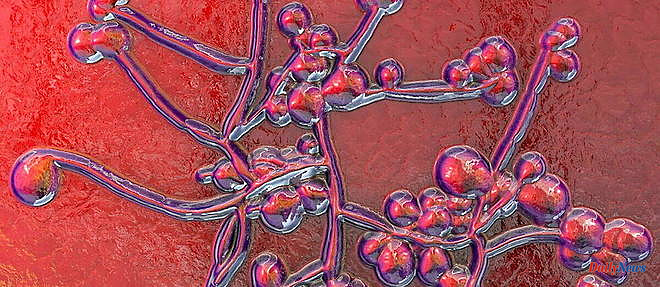It is already spreading terror in the United States. Candida auris is a pathogenic fungus that is resistant to traditionally used antifungal drugs and is spreading at breakneck speed. This is a species of yeast that can be responsible for a fungal infection, candidiasis. Candida auris takes its name from its origin since it was first described following a sample taken from the ear canal of a patient.
On Monday, March 20, the US Health Centers (CDC) issued a warning against this fungus considered an "urgent threat of antimicrobial resistance". According to CDC data, cases of infections tripled from 476 in 2019 to 1,471 cases in 2021. Meanwhile, carriers without reporting infections increased from 1,077 to 4,041 during the same period. period.
This mushroom was discovered in 2009 in Japan and since then it has been present on five continents. In France, the High Council for Public Health had also published a report about it in July 2019 reporting the presence of six cases: "This yeast is difficult to identify in the laboratory, with the methods usually used for the identification of Candida. It persists in the environment and is characterized by a decreased sensitivity to antifungals. The HCSP warns of the danger associated with the spread of this fungus among vulnerable people: "Invasive infections are associated with a high fatality rate, mainly attributable to the numerous comorbidities observed in infected or colonized patients. »
This fungus can pass from person to person through direct contact with someone who is infected or carries the fungus. But transmission can also occur as a result of indirect contact via contaminated objects or certain surfaces (hospital linens, handles, etc.). And global warming is no stranger to the rapid development of this super-mushroom. Indeed, a study published in mBio in July 2019 established a link between its appearance and rising temperatures. If, normally, the majority of mushrooms do not resist the heat of the human body, Candida auris seems to adapt very well to these new weather conditions and higher mercury. He would be able to get out of his "thermal restriction", details the main author of this study. According to the researchers, "this may be the first example of a new fungal disease emerging from climate change, with the caveat that many other factors may have contributed."
In the United States, health centers are particularly concerned about this fungus because it appears to be resistant to antibiotics, is spreading in healthcare settings and can cause serious infections with high mortality rates. “The rapid increase and geographic spread of cases is concerning and underscores the need for continued surveillance, expanded laboratory capacity, faster diagnostic testing, and adherence to infection prevention and control. proven,” cautioned CDC epidemiologist Dr. Meghan Lyman, lead author of the paper. The World Health Organization has also placed Candida auris in the "critical" category of the 19 most dangerous fungal pathogens.












